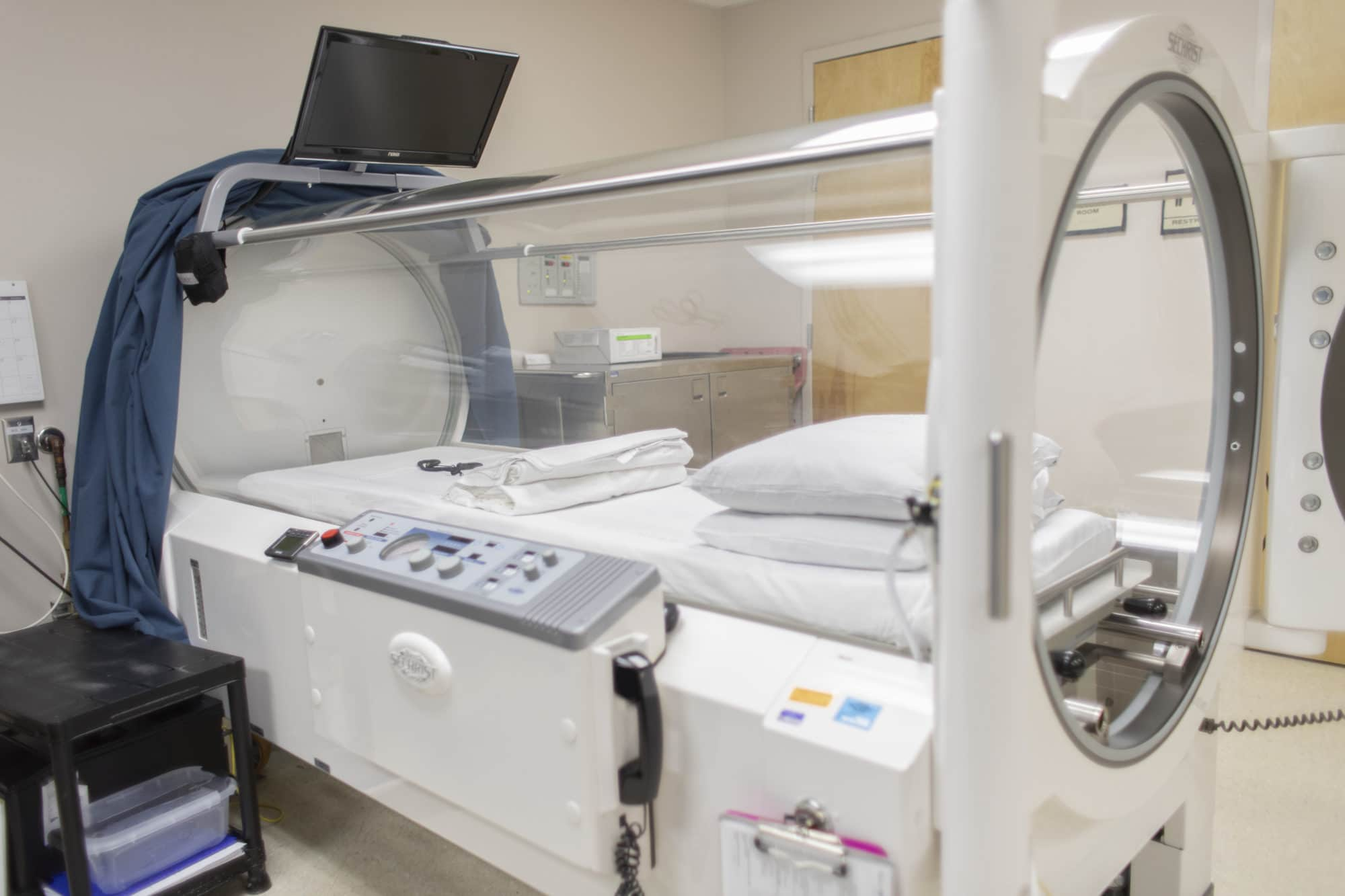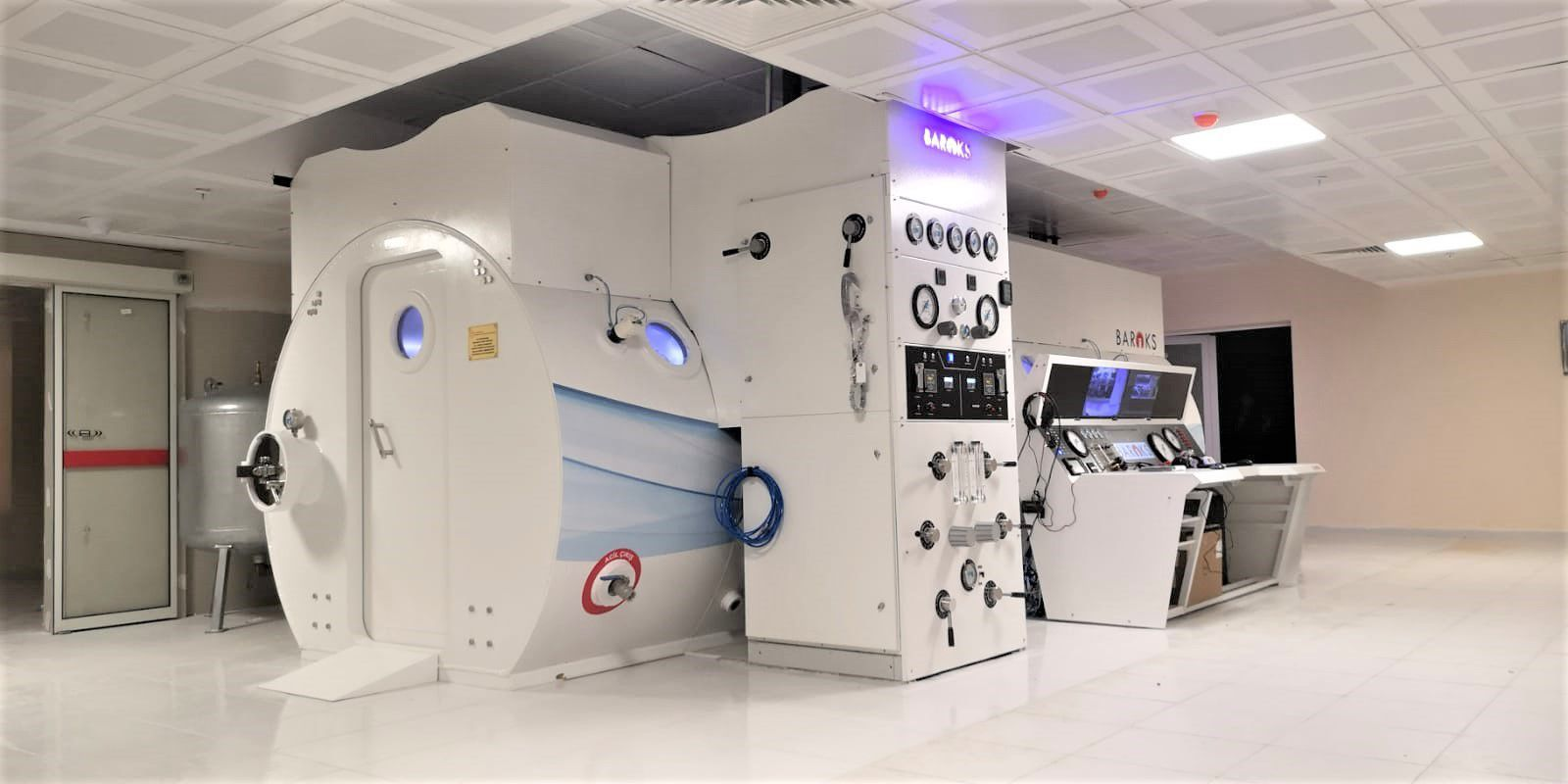How does hyperbaric oxygen chamber impact blood circulation?
When is long-term oxygen therapy used?
Long-term hyperbaric oxygen chamber therapy is an option for people who suffer from chronic oxygen deficiency (hypoxemia). This means that there is too little oxygen bound to the red blood cells in their arterial blood. It is to adequately supply the organs and cells of the body with this vital element.
OXYGEN CHAMBER THERAPY IN A NUTSHELL:
Long-term oxygen therapy is good for people with chronic oxygen deficiency. Such hypoxemia (lack of oxygen in the blood) is mainly comes by severe lung diseases such as COPD or pulmonary fibrosis.
Chronic hypoxemia can have a number of causes. First and foremost are serious lung diseases such as
- the chronic obstructive pulmonary disease (COPD),
- Pulmonary emphysema ,
- the pulmonary fibrosis,
- the cystic fibrosis (CF)
- or recurrent pulmonary embolism.
Diseases that hinder the breathing process are paralysis of the respiratory muscles or narrowing of the chest. Moreover, it is due to deformation of the ribs or the spine, can lead to a chronic lack of oxygen.
But not only diseases of the respiratory organs can cause a chronic lack of oxygen, but also heart and cardiovascular diseases. These include pulmonary hypertension, the so-called cor pulmonale (lung heart) and severe chronic heart failure.
Hyperbaric oxygen chamber Helps in oxy gen deficiency
Chronic oxygen deficiency can also have sequelae - especially in the cardiovascular system - which further impair the restricted oxygen supply. This vicious circle is easy to break with long-term o hyperbaric oxygen chamber therapy.
The benefits of LTOT are famous in various scientific studies, especially in connection with COPD. The results show that long-term oxygen therapy significantly increases the life expectancy of patients.
Positive effects have also showed with regard to physical performance and quality of life. With long-term oxygen therapy, it is often possible to achieve significantly improved physical activity again.
Signs and consequences of a chronic lack of oxygen
Almost all organs and cells in our body depend on a constant supply of oxygen-rich blood. If there is a persistent deficiency because the lungs no longer absorb enough oxygen, this can have far-reaching effects on the body. The first signs of a chronic lack of oxygen are usually
- Fatigue,
- Fatigue and
- a drop in physical performance.
In the case of severe undersupply, even minor stresses lead to shortness of breath and exhaustion. That is why you need domestic hyperbaric oxygen chamber.
How does hyperbaric oxygen chamber impact blood circulation?
To compensate for the lack of oxygen, the right ventricle pumps more blood into the pulmonary arteries. This causes hypertension in the lungs, which leads to a thickening of the vascular walls.
Moreover, it makes it even more difficult to absorb oxygen from the air we breathe into the blood. As a result of the pulmonary hypertension, the muscles of the right ventricle are increasingly overloading, which can then lead to right heart failure.
Another mechanism for adapting to the lack of oxygen - similar to high-altitude training for competitive athletes - is to produce more red blood cells. Medically, one speaks of polyglobulia. The excessive number of red bulbs worsens the flow properties of the blood and thus additionally hinders the transport of oxygen.
What is the goal of long-term hyperbaric oxygen chamber therapy?
Chronic hypoxemia leads to mechanisms that further exacerbate the lack of oxygen and have serious consequences in other organs. The aim of long-term hyperbaric oxygen chamber therapy is to break this vicious circle and improve the physical performance and quality of life of the sick.
How do you clarify the need for long-term oxygen therapy?
The diagnostic criterion for such a chronic oxygen deficiency is that the so-called arterial oxygen partial pressure (PaO2) under resting conditions during a stable illness phase of four weeks is at least three times at a value of 55 mmHg (millimeters of mercury) or below. In people with COPD and comorbidities such as cor pulmonale, the limit is 60 mmHg.
How does hyperbaric oxygen chamber maintain oxygen pressure?
The arterial oxygen partial pressure comes by a blood gas analysis. A blood sample takes from an artery or from the earlobe.. The result is available after just a few minutes.
After the chronic hypoxemia comes out, the doctor can prescribe long-term oxygen therapy. The aim is to increase the oxygen supply in the body to at least 60 mmHg or more by administering additional oxygen. In order to achieve this, the necessary oxygen flow rates, which can later be set on the oxygen device, must be precisely determine at the beginning of the therapy.
How is long-term oxygen therapy carried out?
Studies show that long-term oxygen therapy only has the desired success if it comes out for at least 16 hours a day. The general principle is: the longer, the better. Therefore, if possible, treatment should aim at 24 hours per day.
However, this means that the people who receive hyperbaric oxygen chamber connect to a device that supplies the oxygen for the entire day, or at least large parts of it. There are various systems for this: Stationary ones for the home, but also mobile, portable oxygen devices that are relatively small and light and give those affected a lot of freedom of movement.
Typically, an LTOT is easy to check with the help of concentrators or as liquid oxygen; steel pressure cylinders are rarely common.
Which is the best hyperbaric oxygen chamber?
Which system or which combination of devices is best suited for the individual requirements of the individual patient is good to discuss with the treating specialist. The oxygen usually checks through the nose, although there are also various application systems here.
People on long-term oxygen therapy should have regular check-ups from their pulmonologist. The guideline recommends every three months.
What are the risks and side effects of long-term oxygen therapy?
Especially at high flow rates, the LTOT can dry out the nasal mucous membranes. However, this is easy to counter by connecting a humidifier and taking appropriate care measures.
Apart from that, long-term hyperbaric oxygen chamber therapy is in principle free of side effects, even after years of use, if the patient consistently adheres to the oxygen flow rates prescribed by the doctor. That means
- on the one hand, never to interrupt the treatment on your own,
- on the other hand, the amount of oxygen must not be increased above a predetermined maximum value even in the case of shortness of breath.
Because a prolonged overdose of the drug oxygen can have serious consequences. Too much oxygen can be just as harmful as too little.







